Stomach problems diet. Discovering the Low FODMAP Diet: 6 Changes to Ease Gastrointestinal Issues
What is the FODMAP diet? How can it help with stomach problems? Explore 6 diet changes to ease digestive issues and improve gut health.
Understanding the FODMAP Diet
FODMAP stands for Fermentable Oligosaccharides, Disaccharides, Monosaccharides and Polyols, which are a group of carbohydrates that can be difficult for some people to digest. For those with irritable bowel syndrome (IBS) or other gastrointestinal issues, these FODMAPs can cause problems like bloating, gas, diarrhea, and constipation.
The low FODMAP diet aims to identify and eliminate the specific foods that are high in these problematic carbohydrates. By limiting high-FODMAP foods and focusing on low-FODMAP options, individuals with digestive sensitivities can experience relief from their symptoms.
Foods High and Low in FODMAPs
Identifying high-FODMAP and low-FODMAP foods is the key to following this diet effectively. Some examples include:
High in FODMAPs
- Fruits: apples, figs, mango, pears, watermelon, blackberries, dried fruit
- Vegetables: broccoli, cauliflower, Brussels sprouts, mushrooms, sweet corn, asparagus, celery, hummus
- Dairy: cow’s milk, yogurt, ice cream, cottage cheese, soy milk
- Breads and cereals: regular wheat or rye bread
- Desserts and sweeteners: sugar-free candy, gum, supplements, milk chocolate, honey, agave
- Condiments: garlic, onions, ketchup, commercial salad dressings, seasonings with garlic or onion powder
- Beverages: rum, champagne, coffee drinks with milk or soy milk, chamomile tea
Low in FODMAPs
- Fruits: cantaloupe, grapes, kiwi, mandarin oranges, pineapple, strawberries
- Vegetables: eggplant, green beans, bok choy, bell pepper, carrot, cucumber, lettuce, potato, tomato
- Dairy: lactose-free milk, almond milk, kefir milk, feta cheese, camembert cheese, hard cheeses, soy protein-based milk
- Breads and cereals: sourdough spelt bread, rice cakes, corn flakes, oats, quinoa flakes, rice, corn pasta
- Desserts and sweeteners: dark chocolate, maple syrup, table sugar
- Condiments: cinnamon, nutmeg, paprika, tomato paste, allspice, olive oil, lime or lemon, mustard, vinegar, ginger, leafy herbs, chives, red or green chiles
- Beverages: water, vodka, whiskey, beverages sweetened with maple syrup or stevia, coffee, green or peppermint tea
How Does the Low FODMAP Diet Work?
The goal of the low FODMAP diet is to identify and eliminate the specific foods that are triggering gastrointestinal issues. By avoiding high-FODMAP foods, individuals with IBS or other digestive sensitivities can experience relief from symptoms like bloating, gas, diarrhea, and constipation.
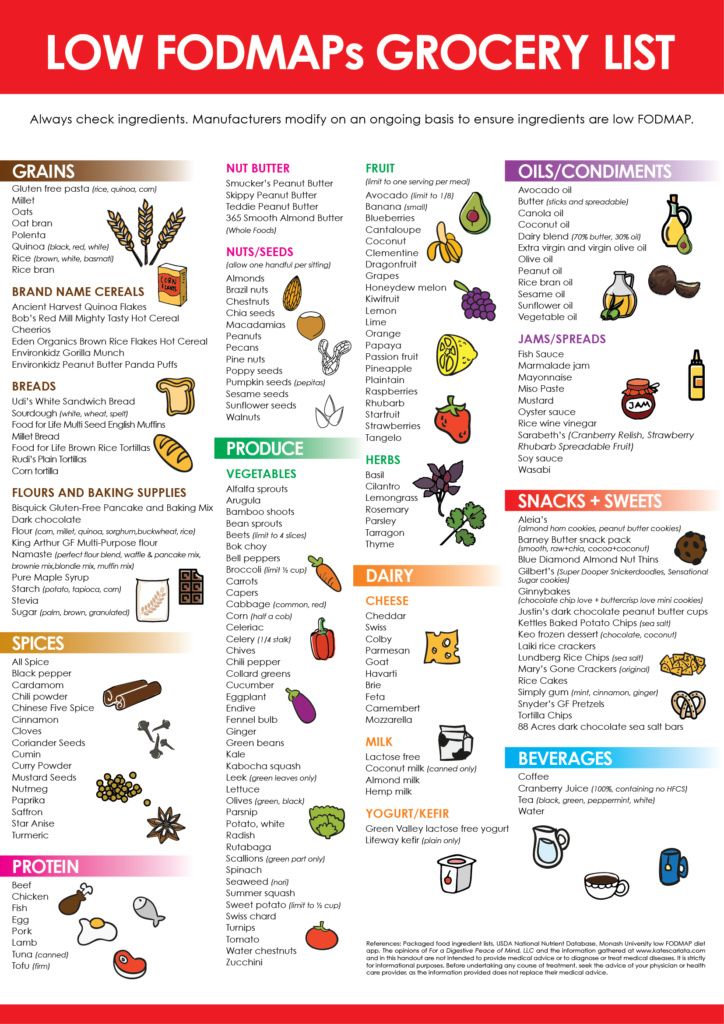
The diet is typically done in three phases: elimination, reintroduction, and personalization. During the elimination phase, high-FODMAP foods are strictly avoided. Then, the reintroduction phase allows for slowly adding back certain foods to determine individual tolerances. Finally, the personalization phase involves finding the right balance of low-FODMAP and tolerated high-FODMAP foods for long-term gut health.
The Benefits of a Low FODMAP Diet
Research has shown that the low FODMAP diet can be highly effective for those with IBS. Approximately 75% of people with IBS who have tried the diet experienced a reduction or absence of gastrointestinal symptoms.
By eliminating the problematic FODMAPs, individuals can experience relief from issues like abdominal pain, bloating, gas, diarrhea, and constipation. This can lead to improved quality of life and better overall gut health.
6 Diet Changes to Ease Gastrointestinal Issues
Implementing a low FODMAP diet can involve making several key changes to your eating habits. Here are six diet changes that can help ease gastrointestinal issues:

1. Identify and Avoid High-FODMAP Foods
The first step is to become familiar with the high-FODMAP foods to avoid, such as certain fruits, vegetables, dairy products, and sweeteners. This requires carefully reading food labels and being mindful of your dietary choices.
2. Focus on Low-FODMAP Options
Once you’ve identified the high-FODMAP foods to avoid, shift your focus to incorporating more low-FODMAP options into your diet. This includes specific fruits, vegetables, dairy alternatives, and other foods that are gentle on the digestive system.
3. Gradually Reintroduce Foods
After a period of strictly avoiding high-FODMAP foods, you can begin to slowly reintroduce them one by one. This process helps you identify which specific foods may be triggering your digestive issues, allowing you to personalize your diet accordingly.
4. Prioritize Gut-Friendly Foods
In addition to low-FODMAP options, focus on incorporating other gut-friendly foods into your diet, such as probiotics, fermented foods, and fiber-rich options. These can help support a healthy gut microbiome and improve overall digestive function.

5. Stay Hydrated
Drinking plenty of water is crucial when following a low FODMAP diet, as it can help prevent constipation and support overall digestive health.
6. Seek Professional Guidance
If you’re new to the low FODMAP diet or are experiencing persistent digestive issues, it’s recommended to work with a registered dietitian or healthcare provider. They can help you navigate the diet effectively and ensure you’re meeting your nutritional needs.
Conclusion
The low FODMAP diet can be a powerful tool for individuals struggling with gastrointestinal issues like IBS. By identifying and eliminating high-FODMAP foods, and gradually reintroducing them, you can personalize your diet to find the right balance for your gut health. Implementing these six diet changes can help ease digestive problems and improve your overall well-being.
FODMAP: A Gut-Friendly Diet to Reduce Stomach Issues
Feeling gassy, bloated and uncomfortable again? We’ve all had that unsettling feeling in our stomach after eating something that just didn’t hit the spot. And it always seems to occur at the worst time possible … “Check, please!”
Uncomfortable and inconvenient digestive issues related to food are very common. It’s estimated that 36% of Americans are lactose intolerant and 10% to 15% of Americans have irritable bowel syndrome, or IBS.
If food is giving you nothing but trouble in the bathroom, you may have considered a low FODMAP diet to ease the pain (and strain). A low FODMAP diet has been shown to help those with IBS with symptoms, but it isn’t for everyone. It’s restrictive and hard work.
So, if you’re blessed with an iron stomach, then this diet isn’t for you. However, this diet could be the answer to help you poop more normally again. Read on to learn more about the diet and next steps.
What does FODMAP stand for?
FODMAP is an acronym that stands for Fermentable Oligosaccharides, Disaccharides, Monosaccharides and Polyols, which basically are a specific group of carbohydrates (sugars) that are difficult for some people to absorb and digest.
Why are foods high in FODMAPs a problem for some people?
For the “Average Joes” with no digestive issues, these saccharides and polyols can make their way through the small and large intestines with no problem. But for those with IBS, they can wreak havoc.
“As saccharides and polyols move through the small intestines, they attract water and increase the amount of fluids in the bowel,” said Jennifer Oikarinen, a registered dietitian at Banner – University Medical Center Phoenix. “As they reach the large intestines, they are rapidly fermented by bacteria in the colon, which produces excess gas. As a result, the excess fluid and gas cause the gut wall to expand and stretch.”
If you have IBS, you already have highly sensitive gut walls and/or issues with foods moving too fast or too slow through your intestines. The excess fluid and gas can lead to abdominal pain, bloating, gas, diarrhea and constipation.
What types of foods are low and high in FODMAPs?
“FODMAPs are found in various types of foods, from every food group, including fruits, vegetables, dairy, protein, breads and cereals and even types of sugar like honey,” Oikarinen said. “This makes following the FODMAP diet a bit tricky.”
“This makes following the FODMAP diet a bit tricky.”
While this isn’t a comprehensive list, here is a list of foods high and low in FODMAPs.
High in FODMAPs
- Fruits: apples, figs, mango, pears, watermelon, blackberries, dried fruit
- Vegetables: Broccoli, cauliflower, Brussels sprouts, mushrooms, sweet corn, asparagus, celery, hummus
- Dairy: Cow’s milk, yogurt, ice cream, cottage cheese, soy milk (made from soybeans)
- Breads and cereals: Regular wheat or rye bread
- Desserts and sweeteners: Sugar-free candy, gum, supplements or shake mixes sweetened with sorbitol, mannitol or xylitol, milk chocolate, honey, agave
- Condiments: Garlic, onions, ketchup, commercial salad dressings, seasonings that contain garlic powder, onion powder, dried mushroom, dried beans of any kind or the white part of scallions
- Beverages: Rum, champagne, coffee drinks with milk or soy milk (made from soybeans), chamomile tea
Low in FODMAPs
- Fruits: cantaloupe, grapes, kiwi, mandarin oranges, pineapple, strawberries
- Vegetables: Eggplant, green beans, bok choy, bell pepper, carrot, cucumber, lettuce, potato, tomato
- Dairy: Lactose-free milk, almond milk, kefir milk, feta cheese, camembert cheese, hard cheeses, soy milk (made from soy protein)
- Breads and cereals: Sourdough spelt bread, rice cakes, corn flakes, oats, quinoa flakes, rice, corn pasta
- Desserts and sweeteners: Dark chocolate, maple syrup, table sugar
- Condiments: Cinnamon, nutmeg, paprika, tomato paste, allspice, olive oil, lime or lemon, mustard, vinegar, ginger, leafy herbs, chives, red or green chiles
- Beverages: water, vodka, whiskey, beverages sweetened with 100% maple syrup or stevia, coffee, green or peppermint tea
How does the low FODMAP diet work?
The best way to prevent bloating, gas, diarrhea and all other tummy issues is to avoid the very foods that are likely to ferment during digestion. This is where eating foods low in FODMAPs can help.
This is where eating foods low in FODMAPs can help.
“The easiest way to describe the FODMAP diet is ‘eat this, and not that,’” Oikarinen said. “The FODMAP diet isn’t a forever diet, but it helps you identify which foods to avoid or limit depending on how your body responds.”
Research has shown 75% of people with IBS who have tried the FODMAP diet experienced fewer and/or the absence of gastrointestinal symptoms. “This means no more pain or cramping after eating, no more worries about rushing to the restroom or the discomfort of not being able to go,” Oikarinen said.
The FODMAP diet should be done under the care and direction of a health care provider and/or a registered dietitian. A dietitian can help you navigate the different types of foods to eliminate but also help you gradually add foods back in over time while monitoring symptoms.
The low FODMAP diet is broken down into three phases:
- The elimination (restriction) phase: Removing all foods high in FODMAP, which includes various types of foods from every food group (fruits, vegetables, dairy, protein, breads and cereals and even types of sugar such as honey).
 This lasts between 2 to 6 weeks.
This lasts between 2 to 6 weeks. - The challenge (reintroduction) phase: Once your gastrointestinal symptoms improve and/or resolve, it’s time to start slowly adding foods back into your diet. This phase lasts 8 to 10 weeks as you move through each food group and monitor and identify any culprits.
- The modification (lifetime) phase: This is the most exciting phase as you get more freedom back on what you can and cannot eat. The goal of this phase is to help you create a balanced diet of both high and low FODMAP foods that can support your gut health, while keeping IBS symptoms at bay.
Important Note: The low FODMAP diet isn’t for everyone
Due to the restrictive nature of the diet, only people diagnosed with IBS should follow a low FODMAP diet. If you suffer from gastrointestinal symptoms, be sure to consult your health care provider and don’t self-diagnose and treat your condition.
“A lot of people think they’ve tried a low FODMAP diet by cutting out only certain food groups, but this isn’t a true FODMAP diet—it’s just avoiding foods similar to if you were lactose intolerant,” Oikarinen said. “FODMAP is cutting every high FODMAP food. If you don’t need to go this extreme, you probably don’t need this diet.”
“FODMAP is cutting every high FODMAP food. If you don’t need to go this extreme, you probably don’t need this diet.”
To find a Banner Health specialist near you, visit bannerhealth.com.
For other gut-friendly articles, check out:
- Good Gut Bacteria to Boost Your Health
- Stop Stalling: How to Overcome Shy Bowel Syndrome
- How to Deal with Constipation
Nutrition
Wellness
Gastroenterology
Diet and gastrointestinal disease: 8 best foods for gut health
The digestive system is a full-body process. Even our brain gets involved with the gut and microbes, affecting everything from mood and metabolism to our immune systems. There is still much to learn about how diet and the gut affect our whole body, but we do know there are significant connections between chronic disease, diet and gut health.
How the digestive system works
Our digestive tract is an intricate system with many working parts and starts with the moment food touches our mouth. Each part of the system helps break down food and liquid into smaller pieces until our body can absorb and move the nutrients to where they are needed.
Each part of the system helps break down food and liquid into smaller pieces until our body can absorb and move the nutrients to where they are needed.
Particular enzymes in our salvia kick off the digestive process. As food travels from the esophagus to our stomach, enzymes work with contracting muscles, mixing food with the enzymes. Although everyone is a little different, it typically takes around four to five hours for food to pass through the first half of the digestive system.
The small intestine is where our gut microbes start to do their job by breaking down fats, carbs and proteins. It also supports our immune health and absorbs vitamins and minerals. Bacteria in the large intestine (colon) complete the breakdown process and helps to keep our fluids in balance.
The digestive system is also affected by hormones, nerves, and other organs like the pancreas, liver and gallbladder.
Diet and gastrointestinal disease
Marta Jonson, MMN, RDN, LMNT
“Like other types of chronic disease, I strongly believe an individual’s diet affects the management, and in certain situations, even the progression of a chronic GI disease,” says Marta Jonson, MMN, RDN, LMNT, Nebraska Medicine nutrition therapist. “Food is fuel, and if we are not getting the nutrients we need, our bodies will have a difficult time-fighting disease or helping us maintain the quality of life we want.”
“Food is fuel, and if we are not getting the nutrients we need, our bodies will have a difficult time-fighting disease or helping us maintain the quality of life we want.”
Like other chronic diseases, GI patients often experience chronic inflammation, potentially leading to additional health problems. The way we eat may help prevent and keep chronic inflammation at bay. Research reveals connections between diet and inflammation:
- Foods high in saturated fats and transfat may increase inflammation
- Healthy fats (like omega-3 and monounsaturated fat) may help decrease inflammation
- Phytonutrients in fruits and vegetables may help protect against inflammation
Lifestyle also plays a role in managing GI disease:
- Stress management
- Regular exercise and movement
- Limit exposure to environmental toxins, smoking, excess alcohol
- Quality sleep
Diet becomes crucial in preventing disease progression for those with certain GI-related autoimmune disorders. Those with celiac disease and inflammatory bowel disease are highly impacted by what they eat.
Those with celiac disease and inflammatory bowel disease are highly impacted by what they eat.
Can GI disease be prevented or even cured by a healthy diet?
Research is limited but rapidly growing. “The Frederick F. Paustian Inflammatory Bowel Disease Center is partnering with Nebraska Food for Health to further microbiome research,” says Jonson. “As we do more research, we hope to use this knowledge to prevent, cure and help manage GI diseases more precisely with nutrition.”
A healthy diet may look different for everyone. “Nutrition and health are much more complex than just looking at the macronutrients in someone’s diet,” adds Jonson. “I enjoy talking to patients about gut health because it digs deeper than what many people used to consider to be nutrition education.”
Eight best foods for gut health
Foods that promote gut health contain prebiotic fibers and potential anti-inflammatory properties. Ideally, half your plate should be plants, a quarter filled with healthy carbohydrates, and the last quarter a serving of protein. The more color on your plate, the better.
The more color on your plate, the better.
Digestion tips as you add gut-healthy foods to your diet:
- When increasing fiber in your diet, your body needs time to adjust. It’s essential to add fiber-rich foods slowly and stay hydrated to reduce discomfort. Mild bloating after eating high-fiber foods is natural and a sign of healthy digestion
- You don’t need to shop exclusively organic or purchase only fresh produce to add variety and nutrients to your diet. No-salt canned versions and frozen are just as nourishing and can be less expensive. Watch for in-season produce, which can often be on sale
- Use mindful eating techniques to help nurture the brain and gut connection:
- Be fully present at meal times (set aside digital devices)
- Take three to six deep breaths before sitting down to eat to calm the mind and send blood flow to the digestive tract
- Take your time and chew slowly to aid digestion
Add these gut-healthy foods to your diet:
- Flax seeds are rich in omega-3, fiber, and antioxidants.
 Try adding them to oats and smoothies. The body may better absorb the ground version.
Try adding them to oats and smoothies. The body may better absorb the ground version. - Berries like cherries, blackberries, raspberries and blueberries are excellent fiber sources containing phytonutrients (antioxidants) that fight inflammation.
- Turmeric is an antioxidant, fights inflammation, and promotes immunity. Rich in beta carotene and vitamin C, buy the root or high-quality spice version to use in meals, on chicken, veggies or rice.
- Ginger root reduces inflammation and can help calm nausea. Make it as a tea, or try adding it to glazes, veggies, smoothies or salad dressing.
- Beans aid digestion, are high in fiber, and slow digestion to help you feel full. Soak them overnight to reduce the chance of gas.
- Avocados are full of healthy fats and fiber called pectin, which benefits gut health.
- Oats are full of soluble fiber that may help lower cholesterol, slow digestion to help you feel full longer, and aid in blood sugar control.
 Add oats to berries, nuts and seeds to add protein and antioxidants.
Add oats to berries, nuts and seeds to add protein and antioxidants. - Pumpkin is full of fiber and vitamin K, supports bone health, and promotes a healthy gut. Tip: Canned pumpkin typically has more fiber.
Foods to reduce or avoid if you’re prone to GI problems
While all food is nourishing, some of the most common foods to avoid are artificial sweeteners, sugar alcohols, and a regular habit of eating saturated fats or transfats.
- Beware of “sugar-free” or “calorie-free” foods. Often this means artificial sweeteners have replaced sugar. While helpful for those with diabetes, even one or two servings a day can cause bloating, gas and diarrhea
- Saturated fats are inflammatory to the gut and in almost any product on the shelf, including beef, pork and ham. A better choice is lean proteins or plant proteins like tofu, edamame, quinoa, beans and hummus
- Although dairy is an excellent source of protein, those with lactose intolerance are encouraged to try plant-based milk or milk substitutes
“Remember, overall health involves a combination of things, including emotional, physical and mental health,” says Jonson. “A healthy diet is not all or nothing. It’s about being intentional one day at a time, fueling your body with whole foods and knowing that there is a healthy balance.”
“A healthy diet is not all or nothing. It’s about being intentional one day at a time, fueling your body with whole foods and knowing that there is a healthy balance.”
IBS or IBD: what’s the difference?
If you’ve ever experienced gut issues, you know how frustrating it can be. You may try a variety of things to feel better, but if the discomfort continues, you may worry about what’s really going on.
Read More
How your gut affects your whole body
The next time you’re feeling down, instead of blaming it on the weather or a stressful day at work, you may want to look at what you’re putting in your gut. An unhealthy gut or one that is out of balance, can increase your risk for obesity and illnesses like diabetes, and can play a small role in depression and colon cancer. Learn more.
Read More
6 types of irritable bowel syndrome trigger foods
More than 1 in 10 Americans have irritable bowel syndrome or IBS.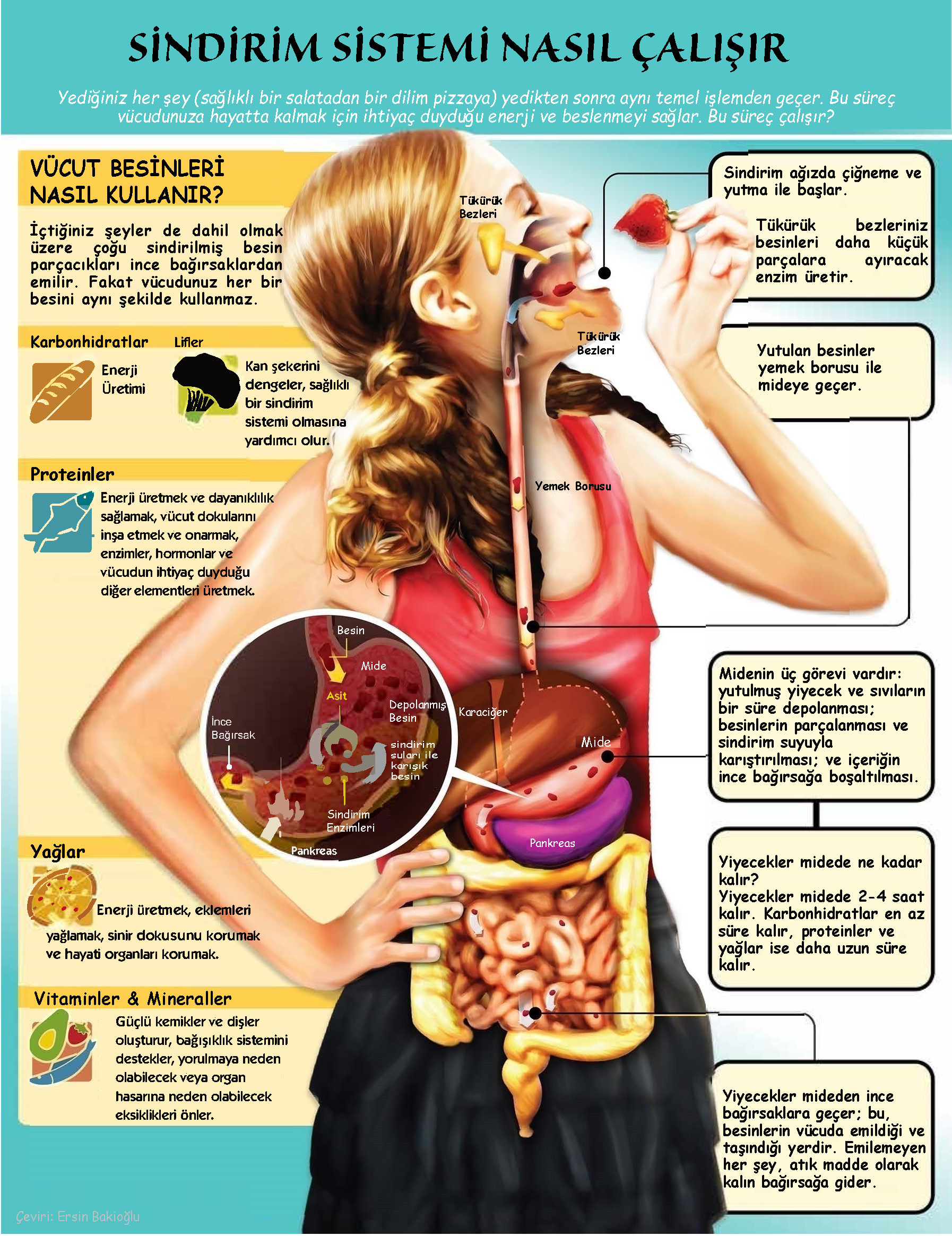 Diet can have a huge effect on IBS symptoms, and everyone has different food triggers. Some
Diet can have a huge effect on IBS symptoms, and everyone has different food triggers. Some
Read More
Diet for gastritis of the stomach | Sanatorium Gorny
Gastritis is a disease of the stomach, in which the mucous membrane is damaged and the body ceases to fully digest the incoming food. One of the reasons leading to the development of gastritis is malnutrition. Therefore, one of the components of the treatment of gastritis is therapeutic nutrition.
General rules. duration of the diet.
Diet for chronic gastritis should be observed even in the case of prolonged remission. In nutrition with gastritis, you must adhere to certain rules:
- Meals should be at the same time.
- Meals should be divided 5-6 times a day
- Meals must be warm
- Do not overeat
- Foods that irritate the mucous membrane should be avoided
- Chew food thoroughly while eating
- Do not eat while running
- Last meal 2-3 hours before bedtime
- Separate meals and drink water by time.
 You can drink 30 minutes after eating.
You can drink 30 minutes after eating.
Nutrition for gastritis during an exacerbation:
With an exacerbation of gastritis, it is necessary to start following a diet when the first symptoms of the disease appear. To get rid of pain and other unpleasant symptoms of the disease, you must strictly adhere to the rules of nutrition. The diet must be nutritionally balanced.
On the first day of exacerbation of gastritis, you must refrain from taking any food. Be sure to drink non-carbonated water or herbal non-hot teas. Products are introduced gradually, as the symptoms of gastritis subside. It is necessary to follow a diet for several weeks, even if the symptoms of the disease have long disappeared.
Notice! In the event of an exacerbation of the disease, sanatorium treatment is contraindicated: it is better to go to a hospital.
If you have a chronic form, then you should regularly carry out preventive treatment .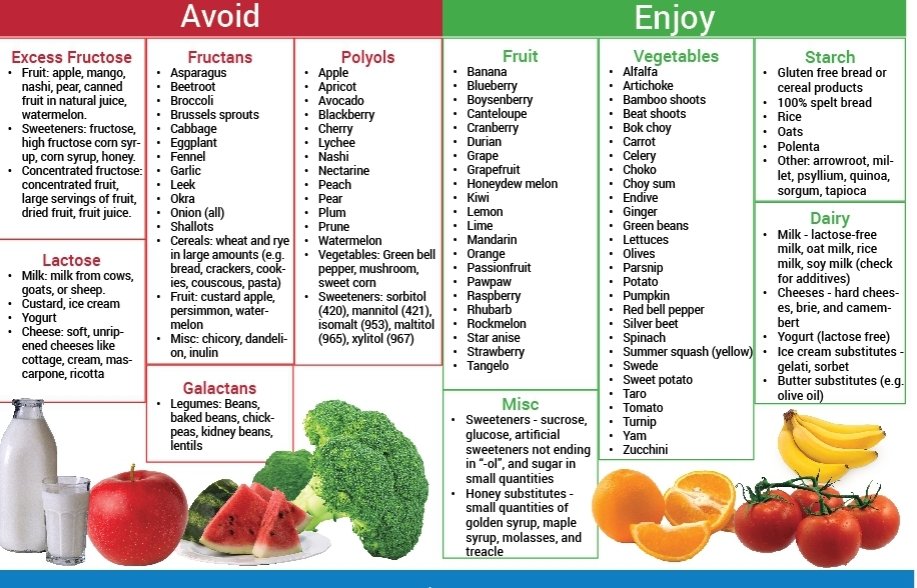
Nutrition for chronic gastritis:
Nutrition for gastritis of the stomach in a chronic form should be varied and healthy. On the table should not be food that irritates the gastric mucosa.
In chronic gastritis with high acidity, it is necessary to follow a diet very strictly. It is very important to exclude from the diet foods that provoke the release of excess gastric juice. These are fried, spicy, salty foods, indigestible foods, an abundance of spices.
In chronic gastritis with low acidity, food should, on the contrary, stimulate the production of gastric juice. Preference should be given to semi-liquid and puree dishes. In a small amount, the use of acidic foods (sour-milk, sour berries and fruits) is allowed.
Diet types:
There are varieties of diets for gastritis
The diet depends on the type of disease (increased / decreased acidity) and on the course of gastritis (acute form or chronic form.
For gastritis with low acidity, it is recommended to stick to table number 2, which includes juice products.
With gastritis with high acidity, diet No. 1 and its varieties are recommended. In case of exacerbation, table 1A is prescribed for 7-10 days with a gradual transition to table 1 B.
List of approved products:
Cereals and cereals | Rice, oatmeal, buckwheat, semolina |
vegetables | Zucchini, cauliflower, pumpkin, potatoes, carrots, beets |
Dairy | Cream, milk, cottage cheese, butter |
Meat | Beef, veal, rabbit, chicken, turkey, |
Soft drinks | Apricot juice, carrot juice, pumpkin juice, rosehip broth, dried fruit compote, mineral water |
List of fully or partially restricted products:
Vegetables | Cucumbers, pickled cucumbers, cabbage, sauerkraut, onions, legumes, spinach, sorrel, horseradish |
Porridges and cereals | Corn, barley, barley, millet groats |
Dessert | Ice cream, sweets, cakes, sweet pastries |
Dairy | Kefir, sour cream, curdled milk |
Meat products | Pork, ham, sausage, frankfurters, sausages, jerky, smoked meat |
Soft drinks | Tea, kvass, carbonated drinks, fruit drinks |
Berries | Any raw berries |
Nutrition menu for gastritis.
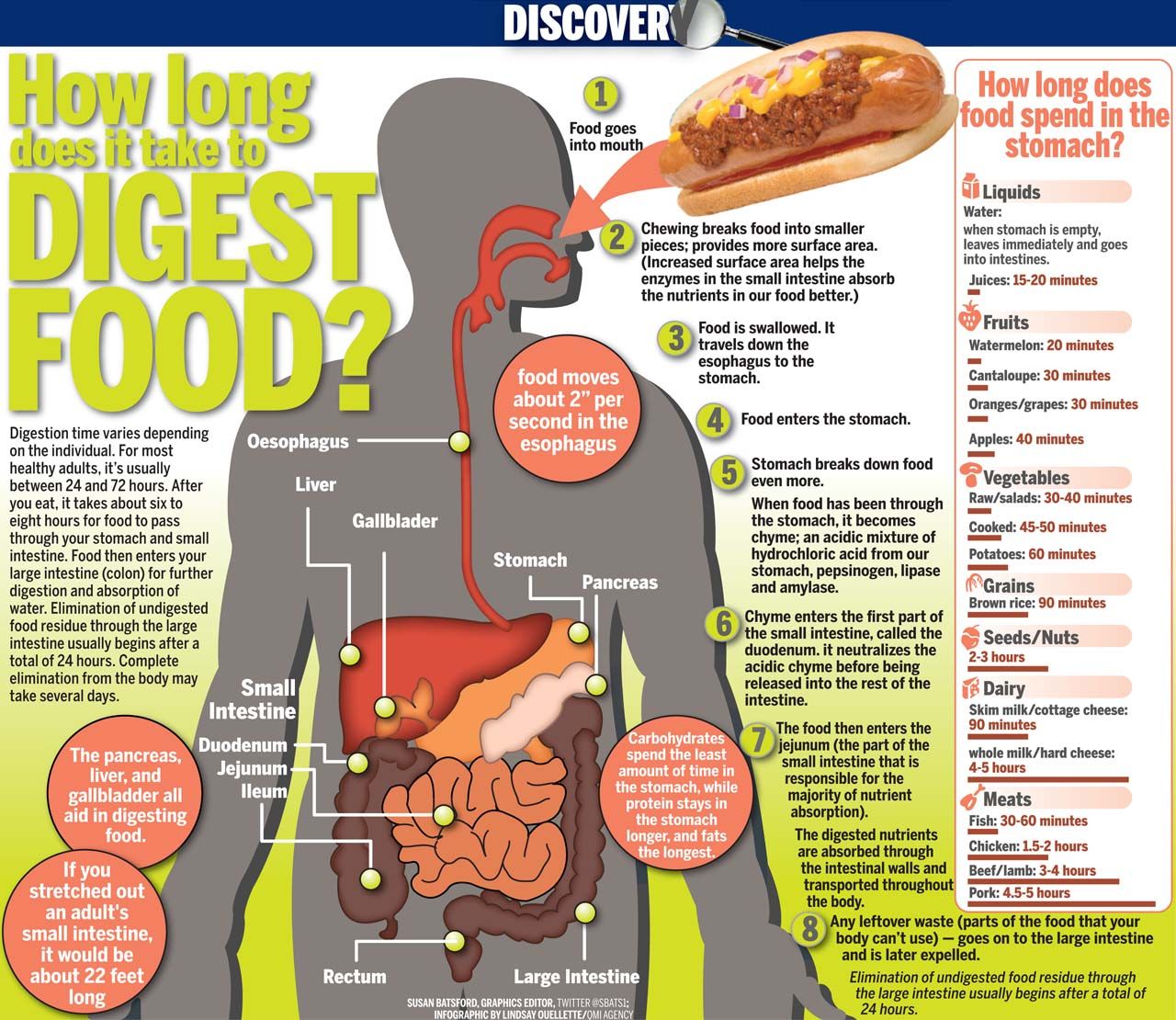 Diet.
Diet.
Diet for gastritis of the stomach allows you to achieve long-term remission. It is necessary to observe therapeutic nutrition for gastritis of the stomach for at least 3 months. It is necessary to completely exclude from the diet any broths, fried foods, pickled and canned foods. It is recommended to completely refuse to eat mushrooms, onions, legumes as hard to digest foods. Mayonnaise, ketchup, vinegar, spices and sauces are also prohibited.
Diet recipes for gastritis:
Nutrition for gastritis should be varied and nutritious. A properly formed menu allows you to provide the body with all the necessary nutrients.
Sample menu for the day:
Breakfast:
Milk buckwheat porridge with butter. Rosehip decoction.
Second breakfast:
Steam omelet. Baked sweet apple.
Lunch:
Vegetable soup with rice. Steam chicken soufflé with mashed potatoes. Compote.
Compote.
High tea:
Lazy dumplings. Kissel
Dinner:
Cod fillet with zucchini puree. Juice
Before bed:
Warm milk no more than 200 ml.
Dietitian comments:
Following a diet for gastritis allows you to achieve a faster recovery and avoid possible relapses and complications.
“The right choice of a sanatorium is a significant step towards the preservation and enhancement of health. “Gorny” is a resort complex that combines the experience and knowledge of Russian and Soviet balneology. The availability of modern medical equipment and innovative installations, the professionalism of the staff and love for their work will serve as a guarantee for extending longevity,” – the head doctor of the sanatorium Karaulov Alexander Olegovich.
References:
- Okorokov, A.N. Chronic gastritis / A.N. Okorokov, N.P. Bazeco. – M.: Medical literature, 2004
- Gastritis and ulcer.
 Effective treatment and prevention regimens. – M.: Vector, 2013
Effective treatment and prevention regimens. – M.: Vector, 2013 - Pimanov, S.I. Esophagitis, gastritis and peptic ulcer disease / S.I. Pimanov. – M .: Medical book, Publishing house of the Nizhny Novgorod State Medical Academy, 2000.
healthy nutrition menu for week
What can and what absolutely can not be eaten with gastritis of the stomach? Is it possible to follow a diet and still eat delicious food? What can be prepared from allowed foods for a week? We understand the material.
What is gastritis?
Diet rules for gastritis
What can you eat with gastritis?
What can not be eaten with gastritis?
Diet for gastritis: menu for the week
Diet for acute gastritis
Diet for chronic gastritis with low acidity
Diet for chronic gastritis with high acidity
Diet for erosive gastritis
Diet for atrophic gastritis
Diet for superficial gastritis
Diet for antral gastritis
Diet for catarrhal gastritis
Conclusion
What is gastritis?
In gastritis, the mucous membrane of the main digestive organ, the stomach, becomes inflamed.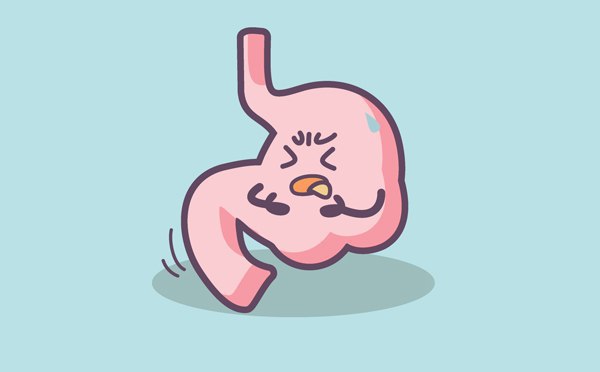 This leads to disruption of its work and entails complications. If you do not turn to a specialist in time, then the mucous membrane will become thinner, and stomach ulcers will appear.
This leads to disruption of its work and entails complications. If you do not turn to a specialist in time, then the mucous membrane will become thinner, and stomach ulcers will appear.
The causes are various factors: malnutrition, rushing to eat, poor quality products, excessive drinking, smoking, lack of vitamins and protein, penetration of various viruses, long-term medication and stress.
Every year there are more and more people with gastritis. In Russia, there are more than 3 million people with this disease.
Gastritis is a rather serious disease. What types of gastritis exist and how do they differ? How to recognize it and can it be cured? Read in our material.
Diet rules for gastritis
Nutrition plays an important role in the treatment of gastritis. It is important to know and follow a diet, for which it is best to consult a doctor. Basically, with any type of gastritis, you need to give up fried, fatty meat and fish, spices, spicy and smoked foods, alcohol, carbonated drinks and fresh pastries. Food must be thoroughly chewed, warm, fresh and thermally processed. It is best to eat at the same time, every three hours, divided by 4-6 times.
Basically, with any type of gastritis, you need to give up fried, fatty meat and fish, spices, spicy and smoked foods, alcohol, carbonated drinks and fresh pastries. Food must be thoroughly chewed, warm, fresh and thermally processed. It is best to eat at the same time, every three hours, divided by 4-6 times.
What can I eat with gastritis?
At first, eating with this disease may seem too boring and limited, but many adapt to this and learn to cook delicious dishes from allowed products. They are:
Bakery products
You can use yesterday’s (stale) wheat bread, crispbread, crackers, unbread biscuits.
Kashi
For patients, cereals such as rice, oatmeal, buckwheat, semolina in water or milk are best suited. Grains are best crushed.
Vegetables
If you have gastritis, you should avoid fresh vegetables. They can be consumed stewed, boiled, baked (without crust) and steamed. Mostly allowed vegetables such as beets, potatoes, carrots, pumpkin, broccoli, cauliflower, zucchini.
They can be consumed stewed, boiled, baked (without crust) and steamed. Mostly allowed vegetables such as beets, potatoes, carrots, pumpkin, broccoli, cauliflower, zucchini.
Meat and fish
Lean boiled or steamed turkey and chicken are best. In the same form, there is fish.
Fruits
From fruits you can eat bananas, baked apples and pears (sweet), you can drink kissels, compotes, make jelly.
Dairy products
Up to 1.5% fat.
Eggs
No more than 2 eggs per day soft-boiled or hard-boiled. Steamed omelet.
Sweet
You can eat marshmallows, marshmallow (fruit) and honey in small quantities.
Oils
Butter and vegetable oil can be consumed, but not more than 20 grams per day.
Water
Drink boiled water no more than 2 liters per day, it is recommended to drink mineral water without gases.
Most often, it is not the product itself that is prohibited, but the method of its preparation, but there are also certain foods and drinks that are strictly forbidden to be consumed. In most cases, contraindicated products are:
In most cases, contraindicated products are:
Meat
Various fatty, fried and smoked meats and fish.
Fruits they contain various acids.
Vegetables
Fresh vegetables and legumes.
Dairy products
Fatty dairy products above 1.5% fat.
Mushrooms
Do not use in any form.
Bakery products
All fresh bread and pastries.
Spices and additives
Spices and vinegar should be excluded from the diet.
Cereals and pasta
Pearl barley and millet. Do not eat pasta made from whole grain flour.
Beverages
Strong tea, coffee, cocoa, alcohol, carbonated drinks.
But the list of allowed and prohibited foods may vary depending on the type of gastritis. Therefore, for a more accurate list, it is better to contact a specialist.
Diet for gastritis: menu for the week
th consumption of proteins, carbohydrates , fats, trace elements and vitamins. You can not starve and eat on the go. Food should be consumed in a good mood, chewed slowly, carefully, without being distracted by anything.
You can not starve and eat on the go. Food should be consumed in a good mood, chewed slowly, carefully, without being distracted by anything.
Acute gastritis diet
Acute gastritis requires a strict diet. All food is steamed or boiled (there should be no crust), meat and fish are low-fat, without seasonings and sauces, tea is not strong, all fruits for making jelly and jelly are sweet, pasta and legumes are prohibited.
How to treat acute gastritis?
One of the complex forms of gastritis is acute. It has specific signs and requires special attention, treatment and nutrition.
Diet for chronic gastritis with low acidity
This diet may seem almost non-restrictive, but it is not. With gastritis with low acidity, you can not eat grapes, canned fish, hot spices, fatty sour-milk products and fresh baking.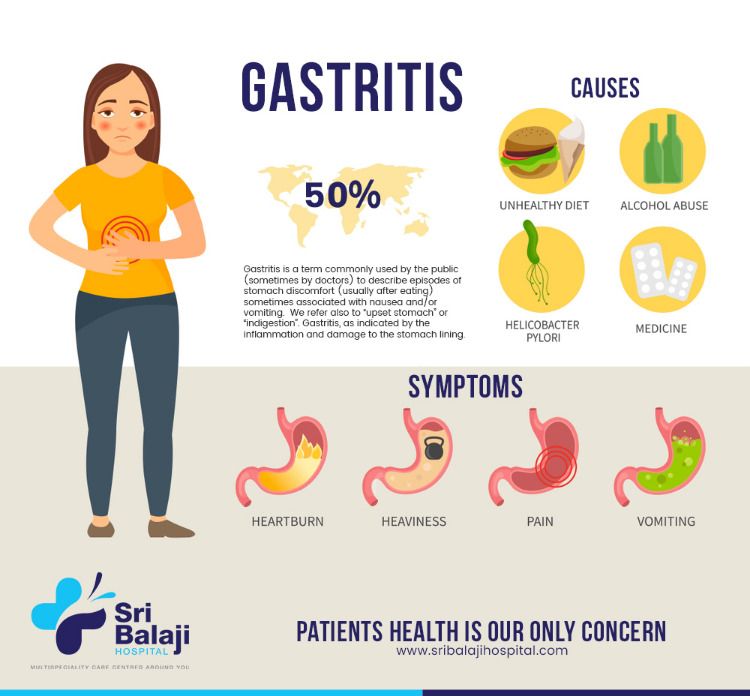 Dinner should be no later than three hours before bedtime.
Dinner should be no later than three hours before bedtime.
Diet for chronic gastritis with high acidity
In order not to irritate the gastric mucosa and leave as many nutrients as possible in the food, it is necessary to steam or boil the food. Dairy products, kissels and soups help protect the affected area, as they easily absorb gastric juice. Meat is well digested if it is eaten with a light side dish or vegetables. Sometimes you can afford marshmallows and honey.
Erosive gastritis diet
You need to eat foods that will be well absorbed, but also make the stomach work. No hot or cold food, only warm. Can be stewed, boiled and steamed. The breaks between taking should be small, it is impossible for a feeling of hunger to appear. Sit on a strict diet for one to three months. When eating, try not to be distracted by anything, eat slowly, chewing food thoroughly.
When eating, try not to be distracted by anything, eat slowly, chewing food thoroughly.
Diet for atrophic gastritis
With this disease, you should not eat foods containing coarse fiber, all food should be crushed as much as possible. Be sure to take into account the level of acidity in case of illness, the menu may vary slightly from it. It is advisable to often eat broccoli and cauliflower, buckwheat porridge and lean meat. Dishes can be boiled, stewed, steamed and baked, but without the formation of a crust.
How to treat atrophic gastritis of the stomach?
Atrophic gastritis is a rather dangerous kind of disease. How to recognize it and can it be cured? Read in our material.
Diet for superficial gastritis
With this disease, you must strictly observe the regimen, then food will be absorbed easily and quickly, do not eat two hours before bedtime, chew food thoroughly, or chop it finely. The diet should contain a large amount of proteins. You should try to eat only freshly prepared meals. Grains are completely boiled. It is forbidden to eat fried and smoked foods.
The diet should contain a large amount of proteins. You should try to eat only freshly prepared meals. Grains are completely boiled. It is forbidden to eat fried and smoked foods.
How to treat superficial gastritis of the stomach?
Superficial gastritis is a long-term disease with periodic exacerbations, in which the upper layers of the gastric mucosa are predominantly inflamed. How to recognize it and can it be cured? Read in our material. Diet for antral gastritis couple, drink plenty of water 50-60 minutes after eating.
How to identify antral gastritis?
Antral gastritis leads to peptic ulcer in 80% of cases. What are the symptoms of antral gastritis of the stomach, why is it dangerous and can it be cured? Read in the material.
Diet for catarrhal gastritis
Meals should only be served warm, you need to chew food well, avoid fatty, fried, spicy and spicy foods.:max_bytes(150000):strip_icc()/Non-gassy-foods-1944688-5b95dd74c9e77c0082fb7bad.png)

 This lasts between 2 to 6 weeks.
This lasts between 2 to 6 weeks.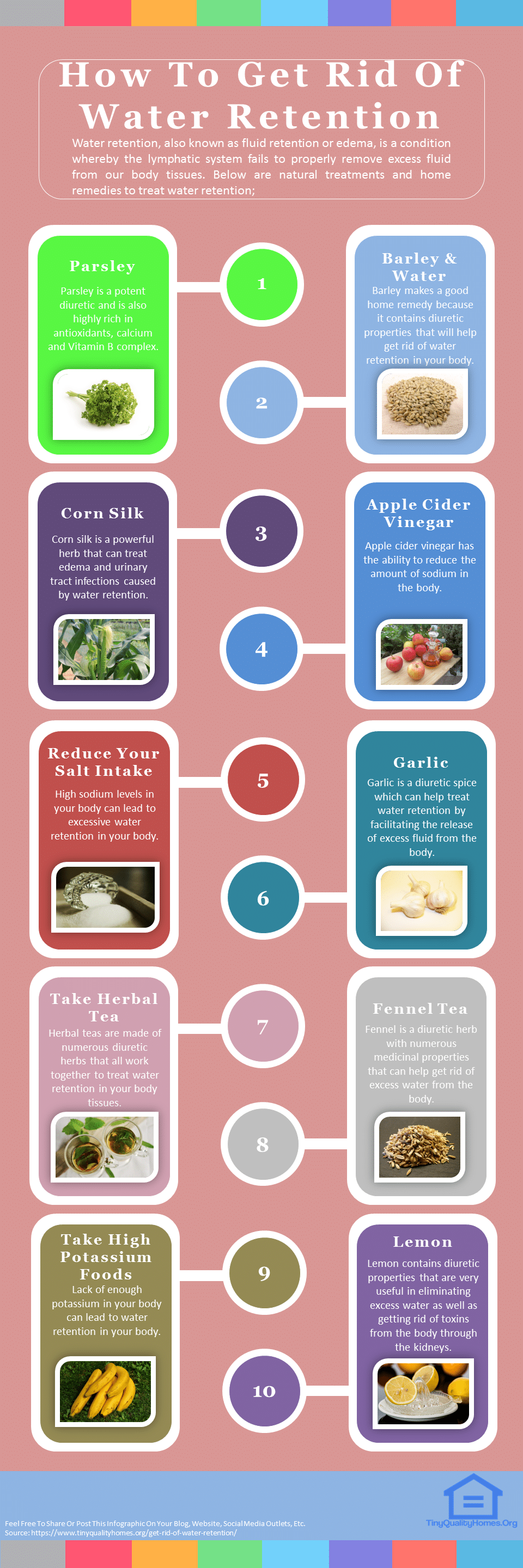 Try adding them to oats and smoothies. The body may better absorb the ground version.
Try adding them to oats and smoothies. The body may better absorb the ground version.  Add oats to berries, nuts and seeds to add protein and antioxidants.
Add oats to berries, nuts and seeds to add protein and antioxidants. You can drink 30 minutes after eating.
You can drink 30 minutes after eating. Effective treatment and prevention regimens. – M.: Vector, 2013
Effective treatment and prevention regimens. – M.: Vector, 2013